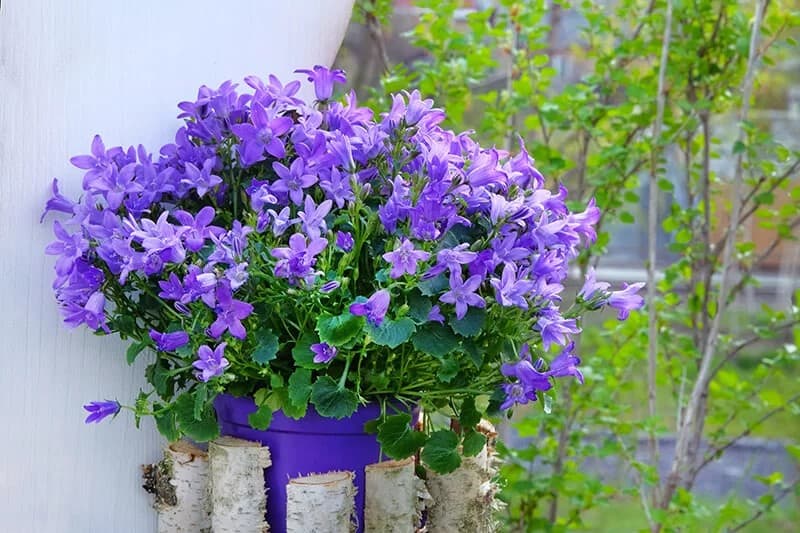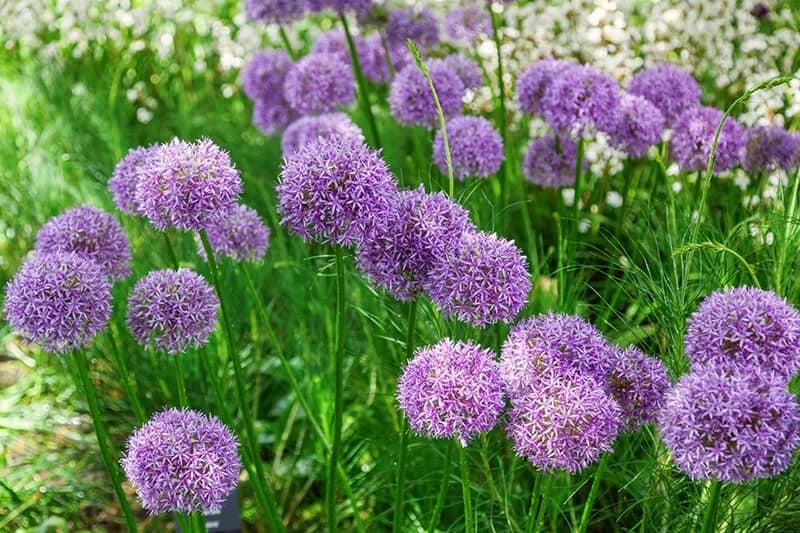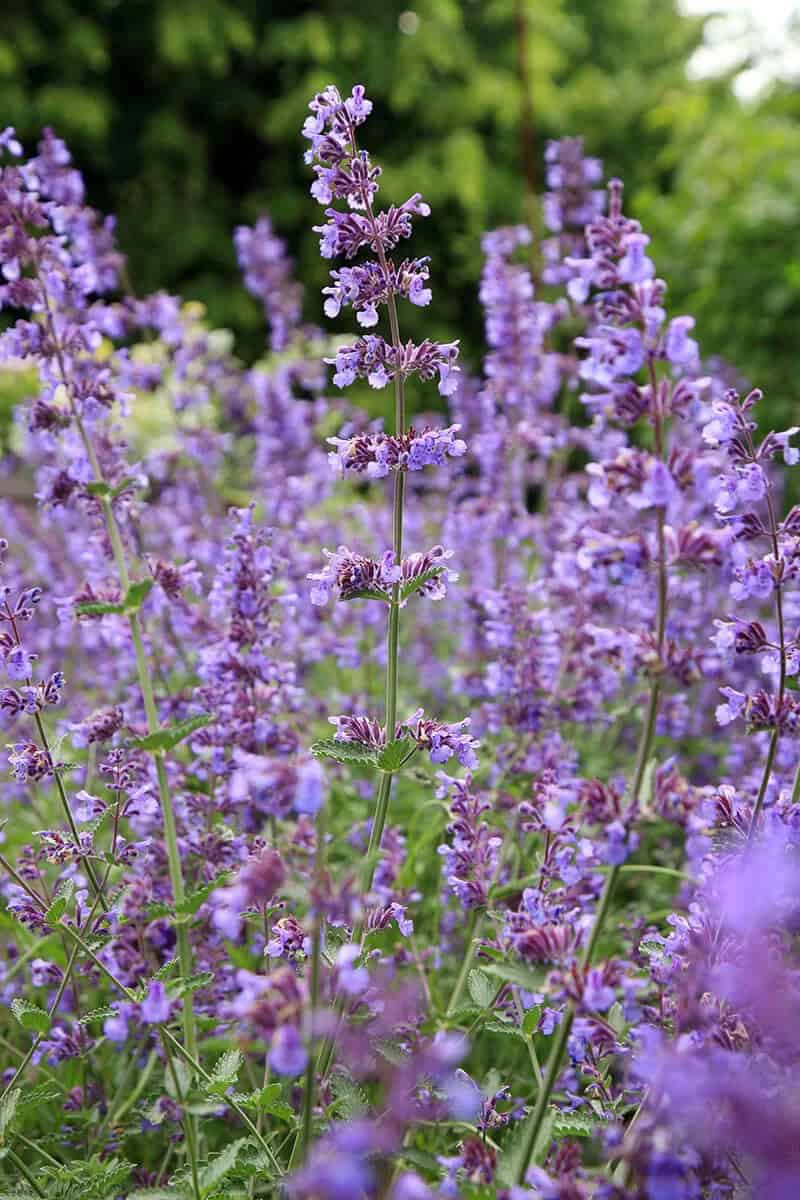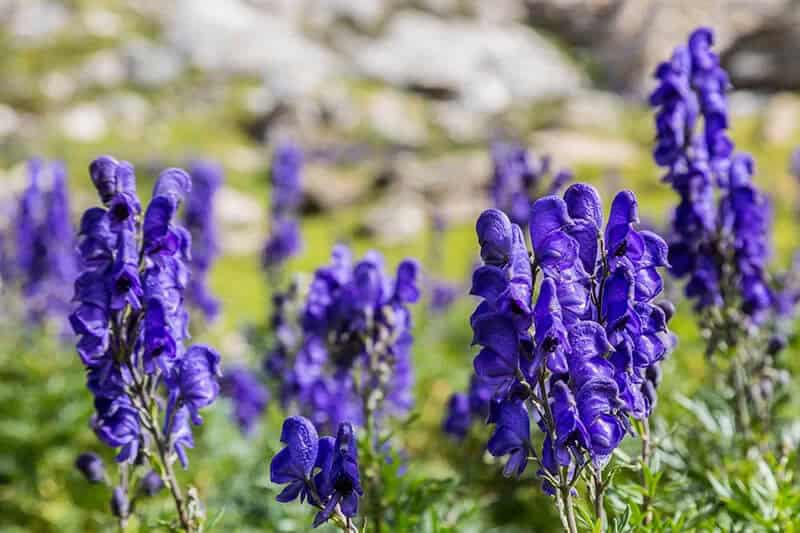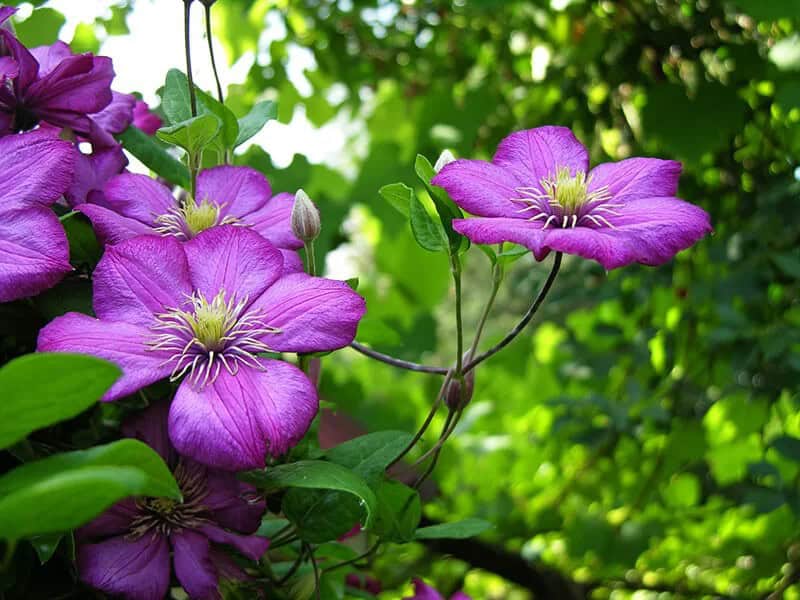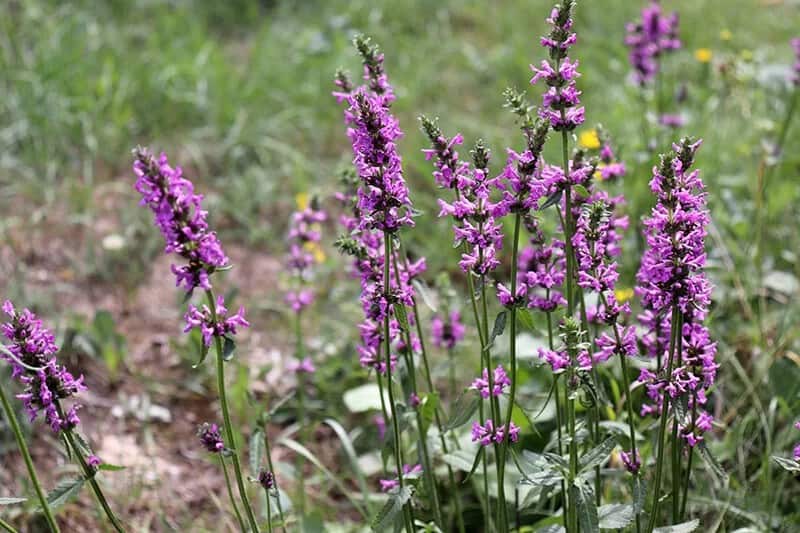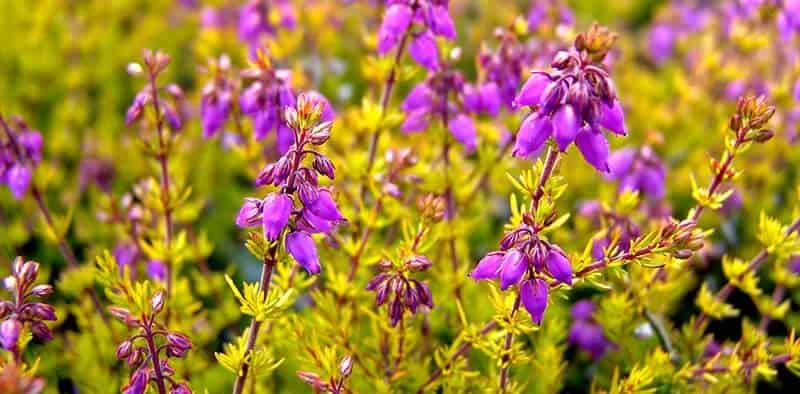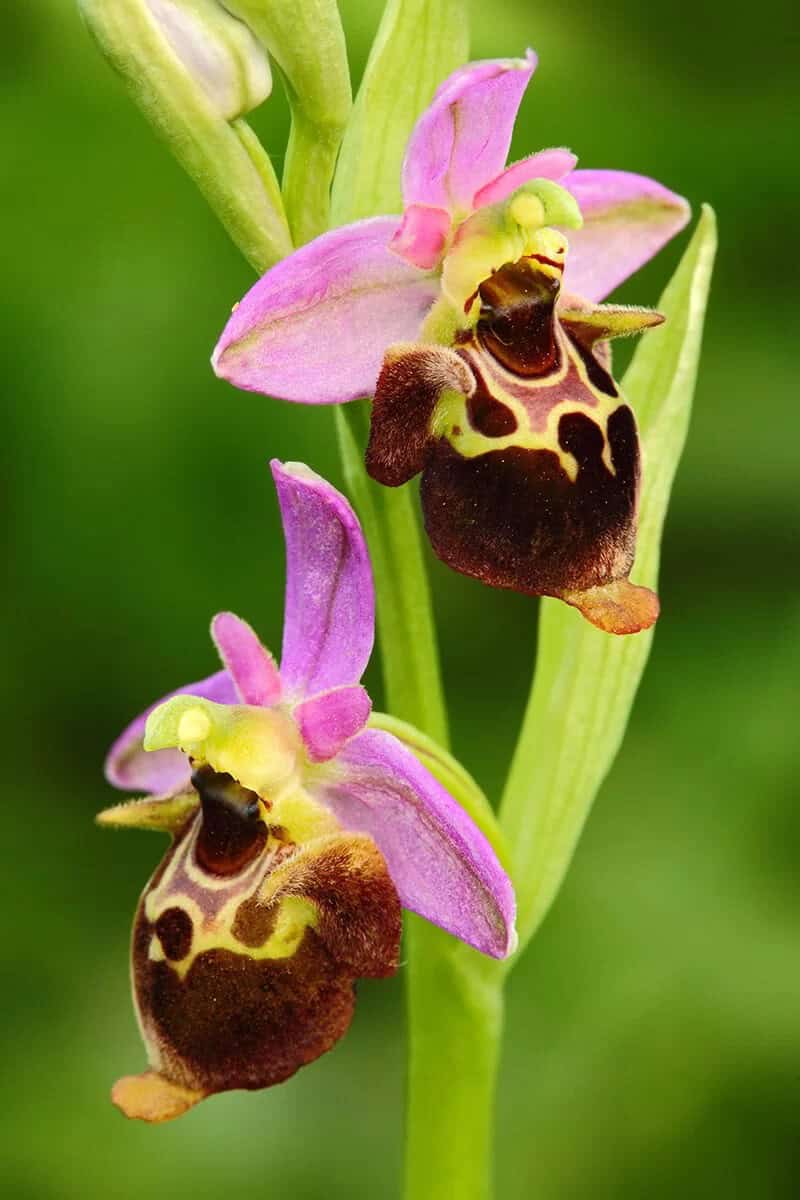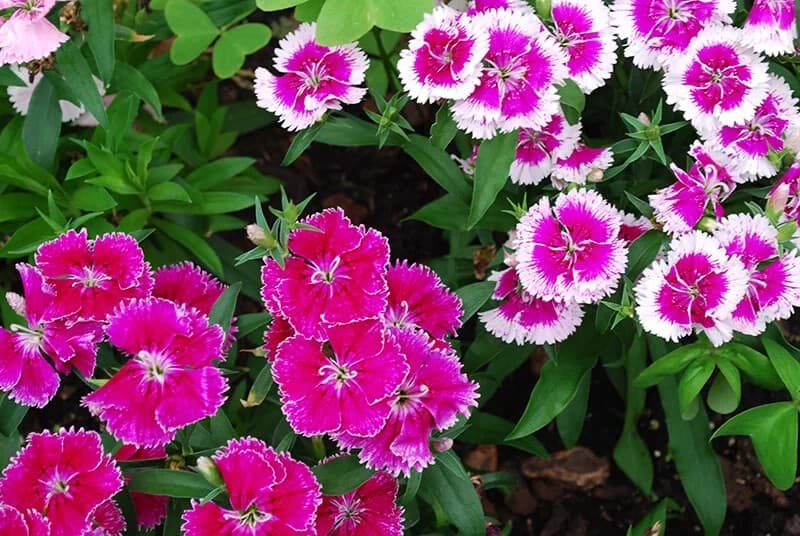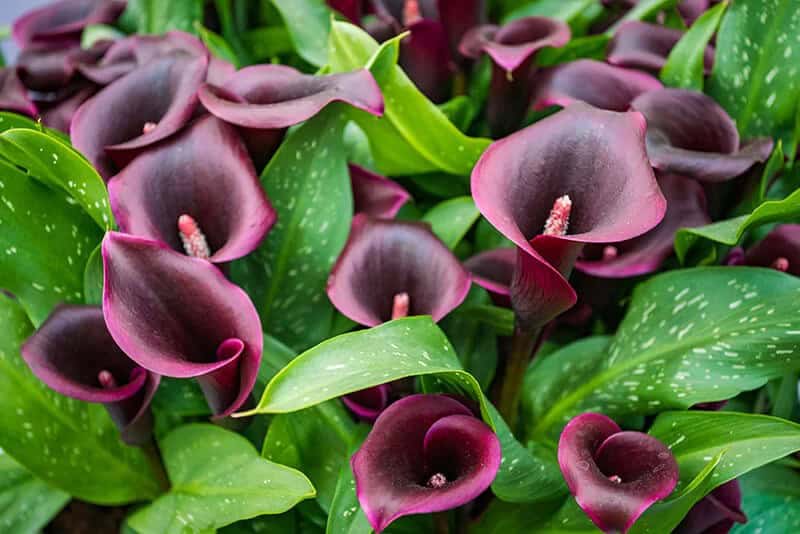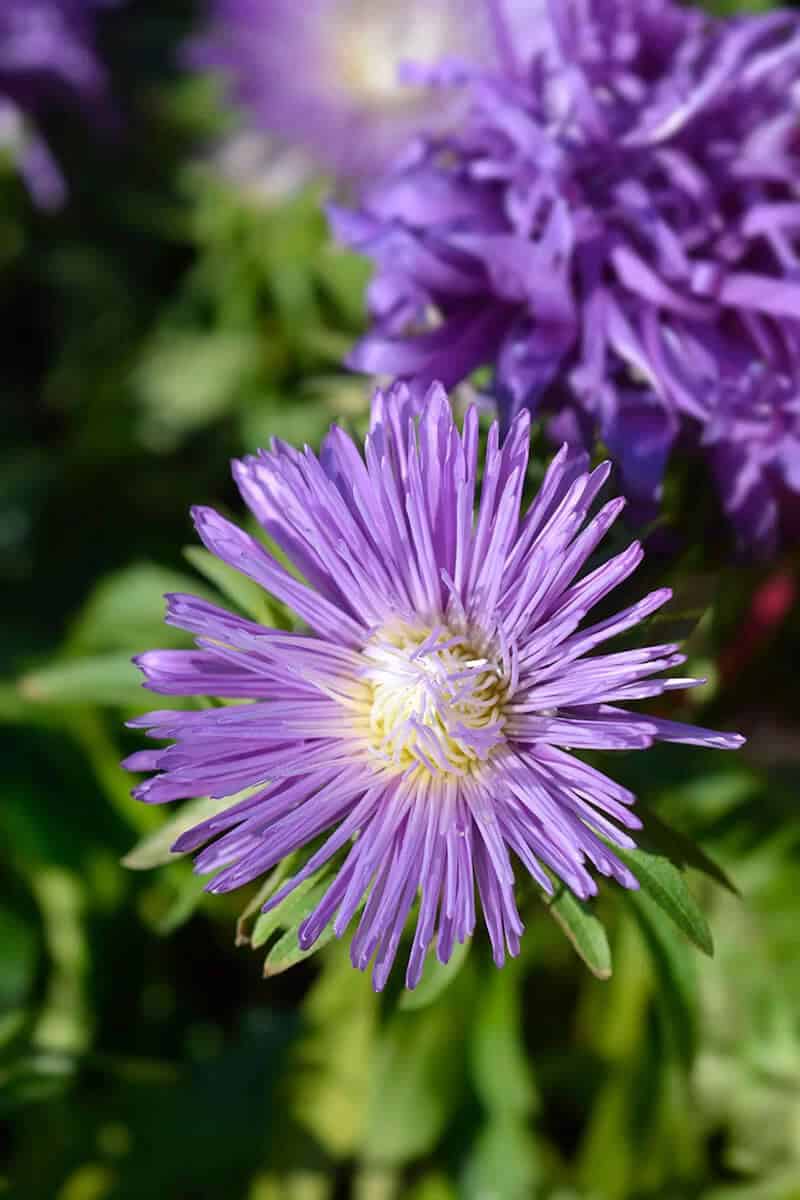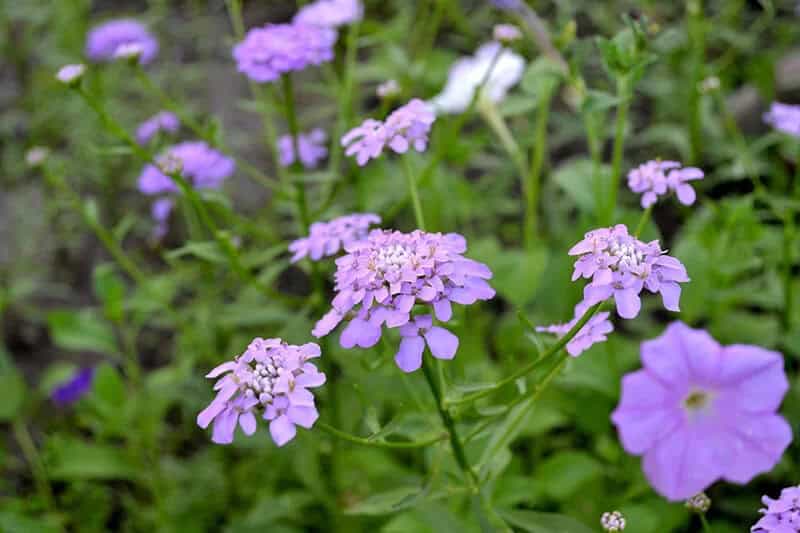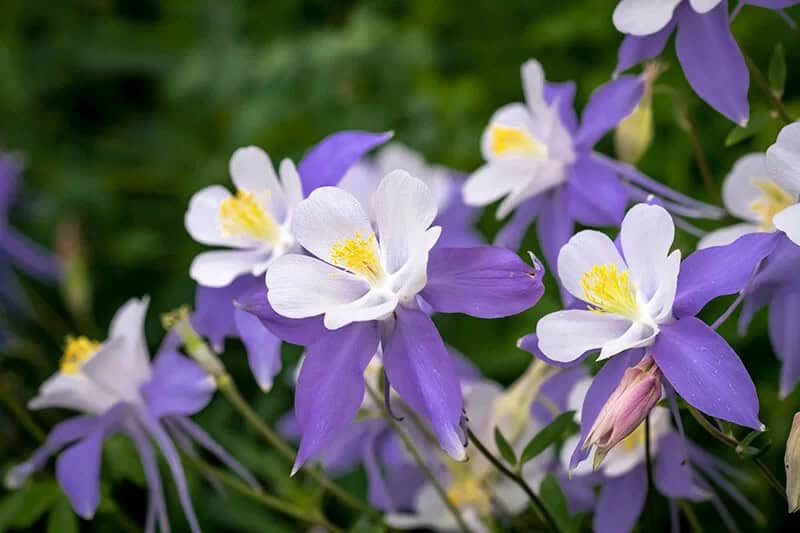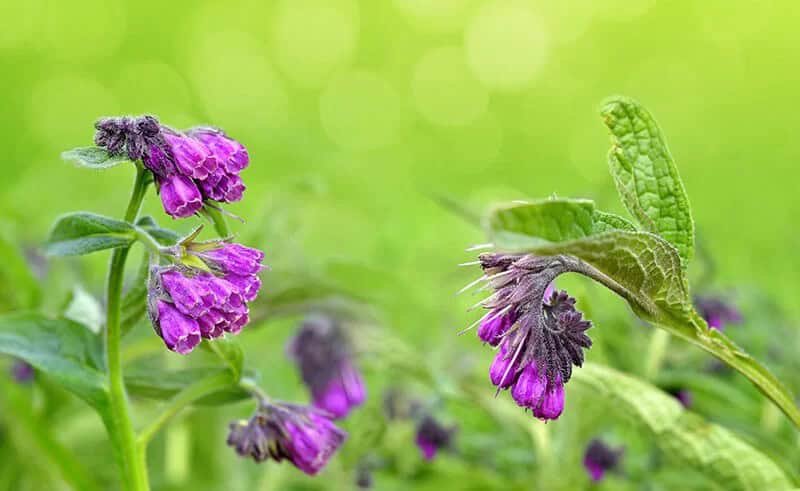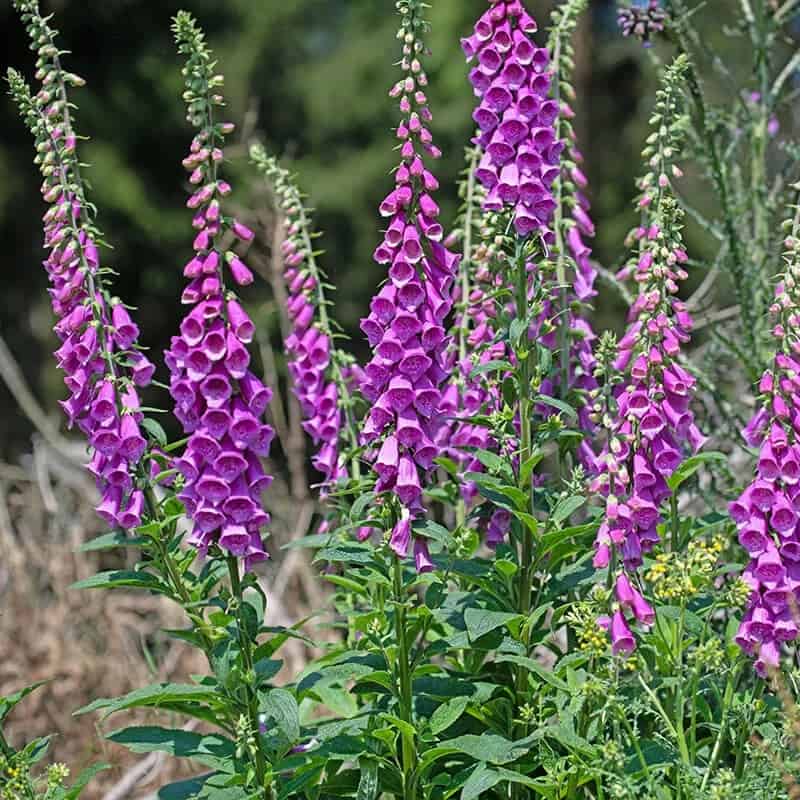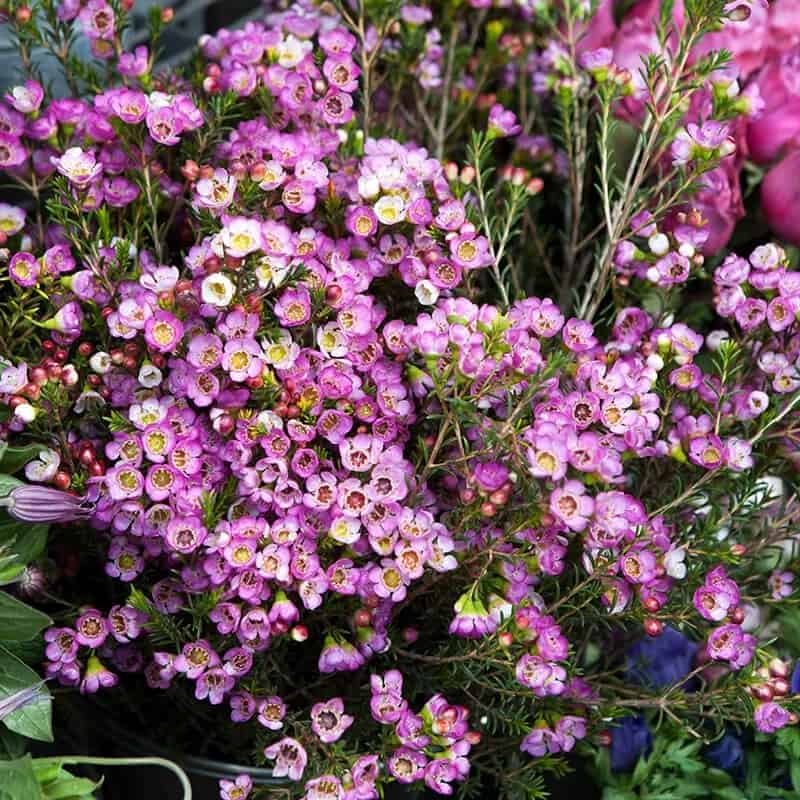The regal allure of purple flowers has been a symbol of royalty for centuries, evoking images of lavish monarchs from ancient civilizations. This majestic hue is deeply rooted in history, with lavender and magenta varieties standing out as particularly iconic representations of power and prestige. The association between the color purple and royal courts stems from its revered status across various cultures, making it a fitting emblem of grandeur and majesty.
30 Captivating Purple Flowers for Your Garden
As you cultivate your outdoor oasis or inject some personality into your indoor space, incorporating purple flowers can elevate the ambiance in an instant. The key to maximizing their impact lies in thoughtfully combining them with complementary hues. Yellow, as it happens, is the perfect partner for purple, as its contrasting nature amplifies the regal quality of the latter.
A harmonious trifecta can also be achieved by pairing purple with pink and white – a visually appealing combination that adds depth to any arrangement. For those looking to explore the world of purple blooms, here’s a curated list of some unique and captivating varieties.
Lavender (Lavandula)
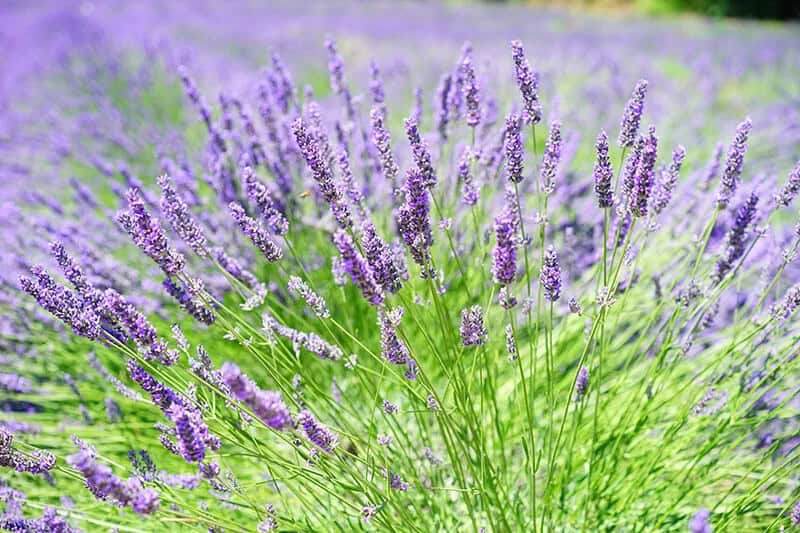
The elegant and soothing presence of purple flowers is often associated with the symbolism of devotion, serenity, grace, purity, and calmness. Among the most popular types of these blooms, one stands out for its unique fragrance and versatility. True English lavender (Lavandula angustifolia) boasts an extraordinary aroma due to the tiny glands embedded within the ‘plant hairs.
‘ This fragrant gem is not only used in a variety of products but also adds flavor to beverages and has medicinal applications in herbal medicine. It thrives in well-drained soil, full sun, and requires moderate watering. Its blooming season typically runs from June to August, making it an ideal addition to any garden or floral arrangement, particularly within USDA growing zones 5-9.
Bellflower (Campanula)
Bellflowers, with their star-shaped purple blooms, are a popular choice for adding a pop of color to gardens. As ground cover or dividers, they can create a stunning display when used in rock gardens, cascading over walls, or containers. One of the benefits of growing bellflowers is their ease of cultivation – they require minimal maintenance and are resistant to disease and pests.
To keep them blooming throughout the season, simply remove spent flowers, which also encourages increased flowering time.
Allium (Allium)
The alluring Allium, also known as ornamental onion, is a sight to behold. Its spherical shape is comprised of hundreds of tiny star-shaped flowers that create an ethereal display above other blooms. The coarse texture of its flower head provides a striking contrast to delicate petals. What’s more, this low-maintenance beauty requires minimal care yet produces large, show-stopping blooms throughout the season.
With its unique symbolism representing unity, prosperity, humility, and patience, Allium is sure to bring harmony and visual interest to any garden. It thrives in well-drained soil, tolerates full sun, and can be grown in zones 3-8. Whether you’re a seasoned gardener or just starting out, the ornamental onion is an excellent choice for anyone looking to add a touch of whimsy and drama to their outdoor space.
Cosmos (Cosmos Bipinnatus)
Cosmos, a flowering herbaceous plant with saucer-shaped and daisy-like flowers, boasts an impressive display of showy annual blooms. As a medium-sized plant, it’s perfect for adding texture to your garden. Notably, Cosmos is an excellent choice for attracting birds and butterflies, making it a valuable addition to any outdoor space. Interestingly, this plant thrives under the right conditions: moderate water needs, well-drained soil, and full sun exposure.
Furthermore, its growth zones range from 2 to 11, making it suitable for a wide variety of climates. When in bloom, typically between June and November, Cosmos produces an abundance of flowers that can be encouraged to grow taller with regular pruning. This tip highlights the importance of maintenance in promoting healthy growth and encouraging blooming.
Catmint (Nepeta)
The coneflower (Echinacea spp.) is a perennial herb that embodies symbolism of happiness, fertility, and love. It thrives in moderate water conditions and well-drained soil, making it suitable for cultivation in USDA zones 4 to 8. This sun-loving plant requires full sunlight to bloom, typically from June to September. One of its notable characteristics is its long-blooming nature, which makes it heat-resistant and pest-resistant.
The aromatic herb produces clusters of lavender-purple flowers that harmonize with most colors but are particularly striking when paired with red-blue hues. Its silvery floral spikes provide a prolonged season of blooms, making them an excellent addition to any garden or arrangement.
Monkshood (Aconitum Napellus)
Monkshood, also known as wolfsbane, boasts a striking appearance with its tall spires of rich purple flowers. This stunning perennial is an attractive addition to any garden, particularly when paired with other late summer blooms like asters. One of the key benefits of monkshood is its ability to attract pollinators, such as bumblebees, due to its nectar-rich and pollen-heavy flowers. As a result, it plays a vital role in supporting local ecosystems.
Monkshood is relatively low-maintenance, thriving in well-drained soil and full sun, making it an excellent choice for gardeners of all skill levels. Its dusky purple hue also makes it a popular choice for cut flower arrangements.
Woodland Sage (Salvia Nemorosa)
The captivating purple blooms of violet sage (Salvia farinacea) not only add a pop of color to your garden but also symbolize longevity, wisdom, and good health. This low-maintenance perennial is perfect for easy-care gardens, as it’s drought-tolerant and requires minimal upkeep. To encourage additional flowering, be sure to remove the spent spikes after blooming. With proper care, salvias will reward you with a prolonged blooming season that can last until autumn.
When planting violet sage, keep in mind its specific needs: well-drained soil, full sun to partly shady conditions, and a growing zone of 4 to 8. Watering requirements are relatively low, making it an ideal choice for gardeners seeking a fuss-free addition to their outdoor space.
Clematis (Clematis)
Clematis, a visually stunning plant, boasts an array of colors and textures that set it apart from other flora. Its unique characteristic is its ability to produce numerous blooms in compact spaces, making it an attractive choice for gardeners. The typical Clematis flower features a majestic 5-6 inch diameter with six or seven delicate petals. Moreover, this climbing plant requires support from the onset, so be sure to provide it with something to ascend, such as a trellis or arbor.
Dwarf Irises (Iris Reticulata)
The iconic Iris Reticulata is a diminutive yet vibrant species of Spring-blooming Iris, renowned for its intoxicating fragrance. Its petite stature allows it to thrive in a variety of settings, including container gardens, rock formations, and borders. As the last wisps of winter dissipate, these dainty treasures emerge from the earth, their delicate petals unfolding like the wings of butterflies hovering just above the soil.
A testament to the beauty of subtlety, Iris Reticulata’s low-maintenance nature makes it an ideal choice for gardeners seeking a splash of color without breaking a sweat. Symbolically, this lovely Iris is often associated with wisdom, nobility, and faith, adding a layer of depth to its already impressive allure.
Purple Coneflower (Echinacea)
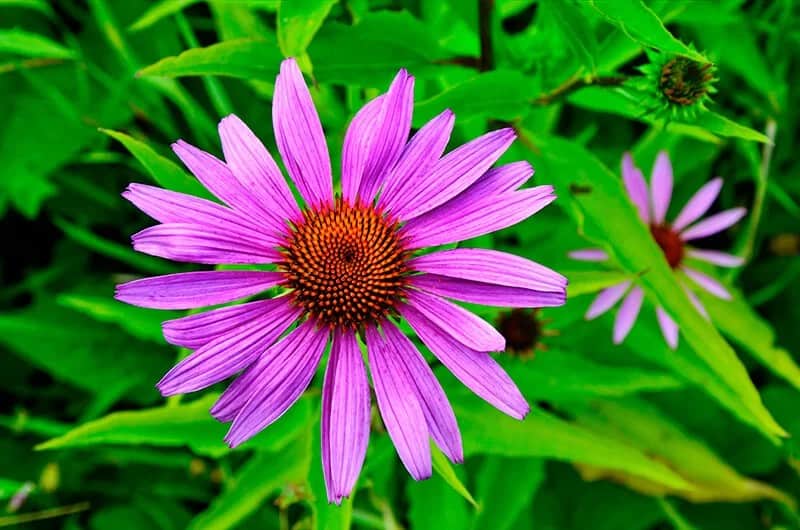
The vibrant flower, with its rich symbolism of strength and healing, is a popular choice among gardeners in the United States. Its moderate water requirements make it an ideal candidate for areas receiving average rainfall. The well-draining soil ensures that the roots stay healthy, which is further boosted by the full sun or partial shade it receives. As a result, this flower thrives in growing zones 5 to 8.
During the blooming season of June to August, it adds a pop of color to any backyard or garden, making it perfect for cut arrangements and display pieces. Its appeal extends beyond aesthetics, as it attracts pollinators like bees, butterflies, and birds, promoting self-seeding and supporting the next year’s yield. What’s more, its ease of growth makes it an excellent choice for novice gardeners.
Alpine Betony (Stachys Monieri)
The majestic bottle-brush-shaped spikes of bright purple flowers not only attract bees and butterflies but also bring a touch of elegance to any garden setting. With low water needs and well-drained soil requirements, this beauty thrives in zones 4 to 8, basking in the warmth of full sun or partial shade. The blooming season typically runs from June to July, offering several weeks of stunning displays.
Whether used as a focal point, mixed into borders, or planted en masse for a dramatic effect, these cut flower gems are sure to delight.
Bell Heather (Erica Cinerea)
Dark-purple bell-shaped flowers, forming clusters up the stem, can be a beautiful addition to any garden. These Bell Heathers grow up to 1 foot tall and 24 inches wide, making them a great option for rock gardens, slopes, coastal gardens, cottage gardens, and containers. With moderate water needs, well-drained soil, and full sun, they’re relatively low-maintenance. However, annual pruning is necessary to keep their growth in check and prevent them from becoming straggly.
Butterfly Bush (Buddleia Davidii)
Butterfly bushes are a sight to behold, with their long panicles of vibrant purple flowers that attract a variety of beneficial insects, including butterflies. One of the most impressive aspects of these shrubs is their extended blooming season, which typically runs from December to February. Not only do they provide a pop of color during the winter months, but they also make for stunning cut flower arrangements.
While there are concerns about the potential invasiveness of some butterfly bush varieties, it’s worth noting that non-invasive variants native to the southwestern US are available for those looking to add these beauties to their garden. In terms of growing conditions, butterfly bushes require low watering needs, moist but well-drained soil, and full sun. They thrive in zones 5-10, making them a great option for many gardeners.
Heliotrope (Heliotropium Arborescens)
Heliotropes, with their deep purple hue, exude eternal love and devotion through their symbolic presence. These temperate perennials are often grown as annuals, but their beauty is worth the extra effort. In fact, the most fragrant variety of heliotrope is the purple one, which boasts a sweet aroma that can be enjoyed from summer right up until the first frost.
With blooms occurring between December and March, these flowers are sure to bring joy and fragrance to your garden during the cooler months. As with any plant, it’s essential to ensure their safety by keeping them out of reach from children and pets, as heliotropes are poisonous if ingested. To keep them happy, provide moderate watering, moist well-drained soil, and full sun – all easily achievable in growing zones 10 and 11.
Anemone (Anemone Nemorosa)
The star-shaped, single, purple poppy-like flowers of this species boast a striking feature – a ring of prominent golden stamens. When grown in ideal conditions, these flowers have a tendency to naturalize well and spread into vibrant colonies over time. One notable characteristic is their ability to adjust to changing light conditions.
On cloudy days, the blooms remain closed and droop downwards, but as soon as the sun shines through, they lift their faces towards its warm rays, tracking its movement across the sky like a celestial dance.
Bittersweet Nightshade (Solanum Dulcamara)
Bittersweet Nightshade is distinguished by its unique, star-shaped flowers featuring prominent yellow cones. The orange blooms measure ½ inch in diameter and are characterized by five petals that curve backward tightly. As the blossoms mature, they transform into berries that ripen from green to orange to a deep red hue.
This process typically occurs between mid-May and September, with optimal growing conditions including high water demands, well-drained soil, full sun exposure or partial shade, and a hardiness zone ranging from 4 to 8.
Bee Orchid (Ophrys Apifera)
One of the most striking and widely recognized orchid species is characterized by its exquisite beauty. The flower’s unique appearance, featuring a lip that mimics a bumblebee, perfectly captures its symbolic connotations of elegance, love, and wealth. With low to average water needs, this orchid thrives in moist, well-drained soil. Its growing zones range from 6 to 9, and it flourishes under full sun exposure or partial shade. The blooming season typically occurs between June and July.
As the flower’s resemblance to a bumblebee attracts bees seeking to mate with the ‘faux-bees’, this clever pollination strategy ensures the plant’s reproduction.
Wild Hyacinth (Dichelostemma Capitatum)
The six-petaled star-shaped blooms of this plant are truly striking, boasting vibrant yellow anthers that add to their beauty. The flowers grow in loose clusters, each one attached to a short stem (pedicel) and opening sequentially from bottom to top. With a blooming season spanning March to August, this species is sure to bring joy and serenity to any outdoor space. When it comes to its needs, this plant requires moderate watering, well-drained soil, and full sun exposure with partial shade.
Its ideal growing zones are 10-11.
Carnations (Dianthus Caryophyllus)
Carnation blossoms boast a unique combination of durability and charm, making them a prized addition to any garden. With their low water requirements and ability to thrive in a range of soil types, including moist and well-drained soil, they can be grown in zones 3-10. These flowers are sun-worshippers at heart, preferring full sun exposure but also tolerating partial shade.
The blooming season typically falls between March and May, during which time their sweet fragrance with hints of earthy spice fills the air. While carnations may not be as widely available for home cultivation as some other varieties, they are a popular choice for bouquets due to their long-lasting blooms and intoxicating aroma.
Calla Lily (Zantedeschia)
A popular addition to any garden or indoor space, these vibrant flowers are renowned for their captivating symbolism and stunning appearance. With a moderate water requirement, they thrive in moist and well-drained soil, making them an ideal choice for zones 8-10. While they require full sun exposure, partial shade is also acceptable. The blooming season typically falls between May and June, during which time they produce breathtaking displays of color and shape.
Perfect for borders, containers, or cut flowers, these flowers are low maintenance and guaranteed to bring a touch of summer magic to your outdoor or indoor space.
Lily of the Nile (Agapanthus Orientalis)
The majestic Agapanthus praeclarus boasts a plethora of striking shades of purple flowers, making it an ideal choice for adding drama to any garden. This South African native thrives in well-drained soil and full sun exposure, allowing its magnificent trumpet-shaped blooms to tower above the seemingly haphazard arrangement of overhanging leaves.
With low water needs and a growth zone ranging from 8 to 11, this beauty is undemanding yet will undoubtedly command attention as it blooms during June and July. Whether used as a focal point or back border, Agapanthus praeclarus is sure to bring a touch of elegance to any outdoor space.
China Aster (Callistephus Chinensis)
China Aster is a highly rewarding summer flower that thrives as an annual. Its vibrant purple hue is a stunning sight to behold, and its blooming period spans several months from August to November. This versatile flower can be grown in beds or containers on the patio, making it perfect for outdoor arrangements.
Moreover, China Aster’s unique blooms come in various forms, ranging from single, daisy-like flowers to fully double pompoms that add an extra touch of elegance to indoor bouquets and arrangements.
Canterbury Bells (Campanula Medium)
Canterbury Bells, a striking biennial, boasts showy flowers with a distinctive cup-and-saucer shape that blooms from May to July. Attracting admiration for its tall stature, this variety excels when grown outdoors, where it can reach its full potential. Not only do the blooms thrive in sunlight, but they also retain their beauty for an extended period when cut, making them an ideal choice for floral arrangements and vases.
With a high water requirement and preference for moist, well-drained soil, Canterbury Bells grow best in zones 4 to 10, where they can absorb the necessary light with full sun exposure or partial shade.
Candytuft (Iberis Pruitii)
Candytuft, a low-maintenance perennial flower, is often used to create beautiful pathways in gardens. Its unique name stems from the vibrant blooms that appear from early spring to fall, rather than any connection to candy itself. A slow-growing ground-hugger, this plant will thrive for many years with well-drained soil and full sun exposure. While it’s a magnet for bees and butterflies, one might be surprised to learn that candytufts have an unusual scent that some find unpleasant.
Despite this quirk, these flowers are a delightful addition to any garden, offering a burst of color and joy from April to May.
Columbine (Aquilegia)
The striking, bell-shaped flowers of this species are not only visually appealing but also symbolize endurance, making them a popular choice among gardeners. To cultivate these charming blooms, moderate watering and well-drained soil are essential. They thrive in zones 3 to 8, where they can bask in full sun or partial shade. As the blooming season unfolds from April to June, their unique appearance is sure to brighten up any bed or border.
When grown in clumps, these flowers are perfect for adding texture and visual interest to larger spaces, while their compact nature also makes them ideal for containers and small-scale gardening.
Common Comfrey (Symphytum Officinale)
Perennials often hold secrets and symbolism, and the [insert name] is no exception. This plant’s spiritual significance lies in its ability to thrive under moderate water needs, preferring moist and well-drained soil. Its growth habits are adaptable to zones 3-9, making it a popular choice for many gardeners. When it comes to light, this perennial requires full sun exposure to truly flourish, with blooming seasons typically occurring from May to June.
One of its most striking features is the nodding clusters of tubular, bell-shaped purple flowers that grow up to 0.25 feet tall, earning it a spot in many gardens. Despite containing some poisonous compounds, this plant has been known to be used by some for medicinal purposes, although caution should always be exercised when working with any potentially toxic plant material.
Fuchsia (Fuchsia Magellanica)
Ladies’ Eardrops, a type of purple flower, embody elegance, good taste, love, and amiability through their symbolism. When it comes to their care, they require moderate watering, well-drained soil, and thrive in zones 9 to 10. In terms of lighting, these flowers prefer full sun or partial shade. Their blooming season typically falls between mid-March to early April. The unique feature of these flowers is their downward-hanging growth habit, which has led to the popular name ‘Ladies’ Eardrop’.
They are commonly grown in bedding plants, pot plants, and hanging baskets for indoor or greenhouse cultivation.
Crocus (Crocus Vernus)
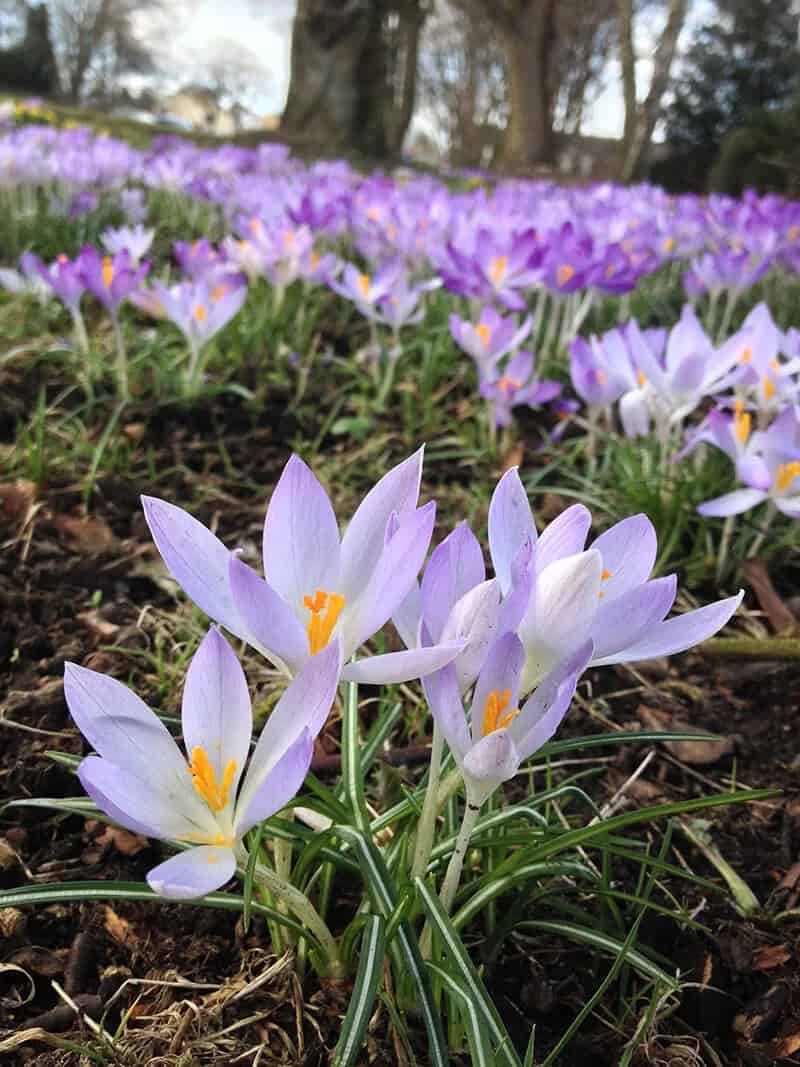
The vibrant Crocus flower is a harbinger of spring’s arrival, bursting forth in a kaleidoscope of colors after the winter blues have lifted. As they unfurl, their sweet fragrance wafts through the air, beckoning busy bees from their cozy hives to partake in the floral feast. These low-maintenance blooms not only bring joy and innocence to the landscape but also require minimal care to thrive.
With the right conditions, Crocus flowers will return year after year, spreading their beauty for all to enjoy. However, they do have one caveat: a penchant for attracting rodents and squirrels, necessitating the use of wire mesh protection to keep these critters at bay. To cultivate these lovely blooms, simply ensure your garden receives full sun exposure or partial shade, while also providing well-drained soil (USDA zones 3-8).
With their October and November blooming seasons, they bring a splash of color to an otherwise gray autumn.
Foxgloves (Digitalis Purpurea)
This stunning flower is characterized by its tubular blossoms with speckled throats, creating a dramatic display. Standing tall, it can reach up to 5 feet in height, making it an ideal addition to the back of a flower bed. With moderate water needs and a preference for moist, well-drained soil, this plant thrives in zones 4-10. It requires full sun exposure or partial shade, and its blooming season typically runs from June to August.
To encourage additional flower stalks to develop, be sure to cut the center flower stalk after it has finished flowering.
Waxflower (Chamelaucium)
With its striking appearance and unique blooming habits, the Waxflower has become a popular choice among gardeners. As a symbol of enduring wealth and riches, this plant is often sought after by those looking to add a touch of elegance to their outdoor spaces. Despite its low water requirements, the Waxflower thrives in well-drained soil and full sun to partial shade conditions, making it an ideal addition to any garden.
In fact, its ability to bloom throughout the winter months, from February to March, makes it a perfect choice for those looking to add some color to their landscape during the typically bleak winter season. With non-stop production of flowers, the Waxflower is also a great option for ornamental use in flower arrangements or as a standalone feature.
30 Super Chic types of Purple Flower Plants for Flower Ornamentation
The versatility of purple flowers is truly remarkable. While the examples listed above represent some of the most familiar varieties, this comprehensive guide aims to empower you in selecting the ideal bloom for your specific needs, whether you’re an avid gardener or seeking to create stunning arrangements. One unique approach is to combine different hues of purple flowers, thereby creating a soothing oasis that can be used to great effect in defining garden borders and adding visual interest.
Additionally, these regal blooms are well-suited for gifting purposes, as they bring an air of sophistication and refinement to any bouquet. Ultimately, the rewards of choosing purple flowers are sure to be nothing short of kingly.
